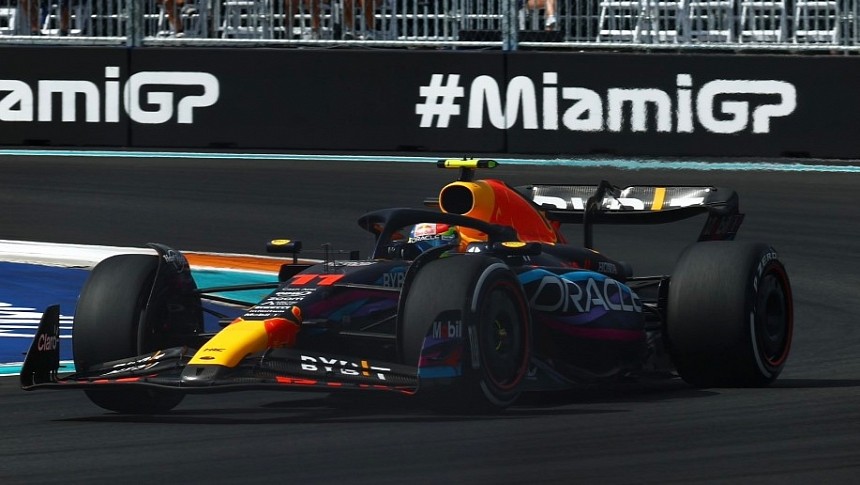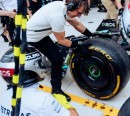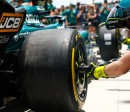This year's Miami GP brought fans some entertainment in the form of chaos during both the qualifying and free practice sessions. But something else also subtly happened. The qualifying lap record set in 2022 was smashed by almost two seconds.
This unforeseen development rang some alarm bells for the higher-ups at Pirelli, as a lower lap time means the cars are going around the track faster and, in turn, putting a lot more force in the tires. Armed with this particular bit of knowledge, the people at Pirelli decided to start working on a reinforced tire that would come just in time for the British Grand Prix weekend.
Choosing that particular race is an odd coincidence, as Formula 1 fans surely remember the eventful 2020 race when Lewis Hamilton crossed the line in first place on only three tires. Keep in mind, that's not what’s happening this year, as tire wear is not the problem like it was back then.
The main issue in 2023 is related to the new tire profile and how the cars work, even when compared to their faster counterparts from three seasons back. As Formula 1 fans already know, the new cars use a ground effect design, which usually means higher cornering speeds, especially in medium to slow corners, keeping the tires under load for longer.
Then there's the fact that unlike the tires used until 2022, the new rubber is mated to an 18-inch wheel as opposed to the 13-inch rims used before the ground effect rules. This compounds the load issue, as the sidewall profile of the tire is consequently lower.
When this change was made, Pirelli had to develop a new architecture for the tires used in Formula 1. And to do that, it had to rely on expected performance levels provided by the teams. But having come up with a tire that can handle the predicted loads, it's already no longer suitable, as evidenced by the Miami GP qualifying session.
The solution here is to introduce new tires with a reinforced sidewall and possibly other changes to make them more durable under load. And this kind of upgrade cannot happen overnight, as it takes both development time and the approval of the FIA, which is reportedly ongoing.
That being said, fans should not get alarmed, as there are currently no concerns regarding the safety of the tires. This is evidenced by the fact that a few drivers were able to run long stints during the Miami Grand Prix, especially on the hard C2 tire compound, with Max Verstappen showing a masterclass in tire management.
And if there are no concerns, a change like this can't be forced through on safety grounds and has to first be approved by the FIA, then by a majority of eight out of the ten teams on the grid. This is probably partly why there are still five more Grand Prix races in Imola, Monaco, Spain, Canada, and Austria between now and when this change is supposed to go through.
Choosing that particular race is an odd coincidence, as Formula 1 fans surely remember the eventful 2020 race when Lewis Hamilton crossed the line in first place on only three tires. Keep in mind, that's not what’s happening this year, as tire wear is not the problem like it was back then.
The main issue in 2023 is related to the new tire profile and how the cars work, even when compared to their faster counterparts from three seasons back. As Formula 1 fans already know, the new cars use a ground effect design, which usually means higher cornering speeds, especially in medium to slow corners, keeping the tires under load for longer.
Then there's the fact that unlike the tires used until 2022, the new rubber is mated to an 18-inch wheel as opposed to the 13-inch rims used before the ground effect rules. This compounds the load issue, as the sidewall profile of the tire is consequently lower.
When this change was made, Pirelli had to develop a new architecture for the tires used in Formula 1. And to do that, it had to rely on expected performance levels provided by the teams. But having come up with a tire that can handle the predicted loads, it's already no longer suitable, as evidenced by the Miami GP qualifying session.
The solution here is to introduce new tires with a reinforced sidewall and possibly other changes to make them more durable under load. And this kind of upgrade cannot happen overnight, as it takes both development time and the approval of the FIA, which is reportedly ongoing.
That being said, fans should not get alarmed, as there are currently no concerns regarding the safety of the tires. This is evidenced by the fact that a few drivers were able to run long stints during the Miami Grand Prix, especially on the hard C2 tire compound, with Max Verstappen showing a masterclass in tire management.
And if there are no concerns, a change like this can't be forced through on safety grounds and has to first be approved by the FIA, then by a majority of eight out of the ten teams on the grid. This is probably partly why there are still five more Grand Prix races in Imola, Monaco, Spain, Canada, and Austria between now and when this change is supposed to go through.








